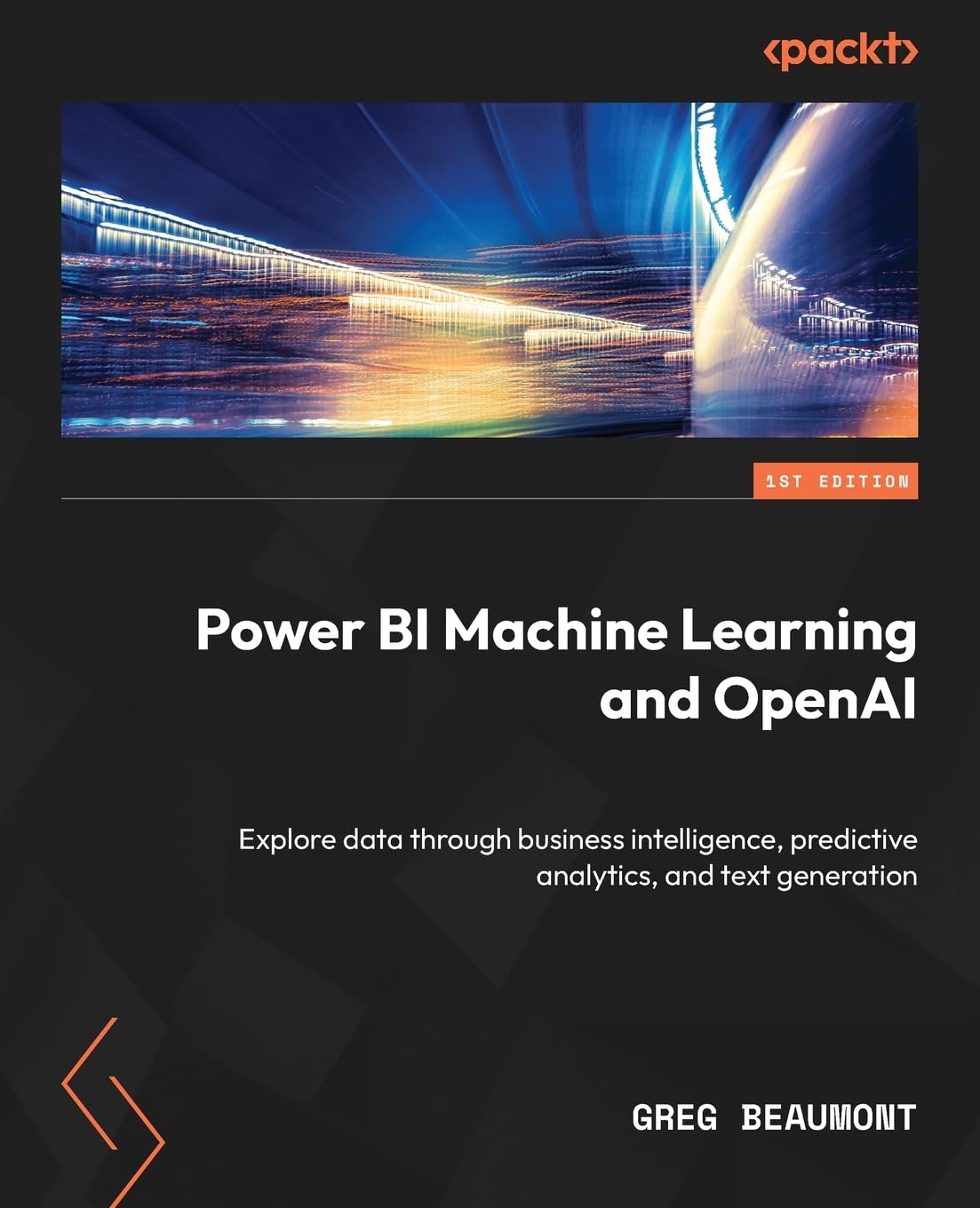معلومات عنا
دعم العملاء
احصل على التطبيق

قم بتوجيه الكاميرا لتنزيل التطبيق
حقوق الطبع والنشر © 2024 Desertcart Holdings Limited


Unleashing Your Data with Power BI Machine Learning and OpenAI: Embark on a data adventure and turn your raw data into meaningful insights
S**N
Implementing Machine Learning Solutions using Power BI is incredible.
In recent years, all industries have explored their data through business intelligence, analytics techniques, and AIML approaches to find their level of presence in the market, demand, and competitor’s strength.Technology is rapidly growing to fulfil market demand and customer needs. Decades back, the BI tools alone dominated the data analytics space by bringing excellent features of visualization reports and dashboards, and Artificial Intelligence and Machine Learning came into the picture and changed the face of these analytics, and various predictions by unlocking their potential heavily and both are sitting in different buckets.Microsoft’s Power BI is a phenomenal tool for building rich visualization dashboards and has now added ML capabilities. The book “Power BI Machine Learning and OpenAI” is significant evidence for this and brings much more stuff to the table of data analytics and ML engineers.As a Data enthusiast, I loved this book very much and would like to share my experience here for your benefit.The author has perfectly lined up all four parts to put into the seamless frame, serve this community and the classical use case, and drive the entire journey.Let's start discussing them one by one.Part 1: Data Exploration and Preparation is every data analytics project's most fundamental and significant process; this is the major portion and first and foremost step in any analytics product building.The author demonstrates this major part well, along with the specific use case, which is really interesting, and readers make themselves work on the same, holding the concepts precisely and making them understand the Power BI environment well-articulated and structured.The author’s detailed walkthrough on the requirement-gathering strategy, various data modeling techniques, and their pros and cons this will surely help BI developers.Planning and preparing the data tables and ingesting them with Power Query are explained very well, followed by evaluating the table and columns in various aspects creating relationships between fact and dimension tables using Power BI capabilities, which are very interesting and inspiring.One step further than utilizing Power BI to build the model Data for Machine Learning, building an analytic report to discover and choose initial features for predicting the height ML model and creating flattened tables in Power Query for ML in Power BI are major milestones.Part 2: Artificial Intelligence, Machine Learning Visuals, and Publishing to Power BI Services: As we know, the visual representation of each feature is a significant task while driving ML solutions.The author has provided a clear path to discovering and adding new features using Power BI and how the features will be added to ML queries in Power Query, and additionally with R and Python language using the FAA Wildlife Strike dataset. Deploying data ingestion and transformation components to the Power BI cloud service must read the topic.Part 3: Machine Learning in Power BIThis is a really amazing part because personally, I had a good experience with core Machine Learning and Power BI projects separately, even though sometimes I thought of integrating them both for the benefit of Machine Learning engineers and Power BI developers to build robust models and rich visualisation.The author gives us the detailed steps to start building the ML model from within a Power BI dataflow for binary prediction and classification-based algorithms. Evaluating ML Models is one of the critical stages in the Machine Learning life cycle.In this book, the author has given a classical demonstration of ML evaluation using Power BI, which is really powerful. Applying Power BI ML to various models makes it much more helpful for readers to understand how ML works with massive visualization techniques using Power BI.Part 4: Integrating OpenAI with Power BIUse cases for OpenAI and Azure OpenAI technologies discussed in detail in this chapter are unique gifts for learners of OpenAI and Azure OpenAI. The author helped us to configure, prepare and build functions to connect Power BI dataflow and develop solutions.Overall … I can give 4.5/5.0 for this. Indeed, an extraordinary effort from the authors is really much appreciated.I am incredibly grateful to the author for all the demonstrations that significantly represent and explain the concepts. Accurately.-Shanthababu PandianArtificial Intelligence and Analytics | Cloud Data and ML Architect | Scrum MasterNational and International Speaker | Blogger |
B**B
Concise and complete guide.
Wonderfully readable step by step guide through the most contemporary world of AI. Highlights the usage of data management to better our world. The example using aircraft safety prediction using available metrics is profoundly interesting and suggestive of an unlimited positive future for Microsoft data management methods. The author presents the material in a most readable and likeable style.
J**5
Well done
Solid introduction to predictive analytics and an interesting use of OpenAI. I appreciated the GitHub component containing content to recreate all the lessons.
ترست بايلوت
منذ 5 أيام
منذ شهرين